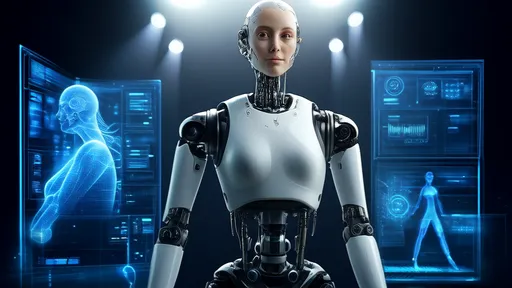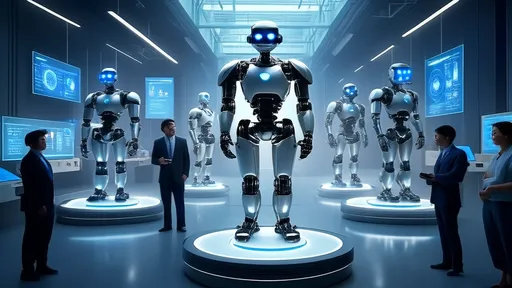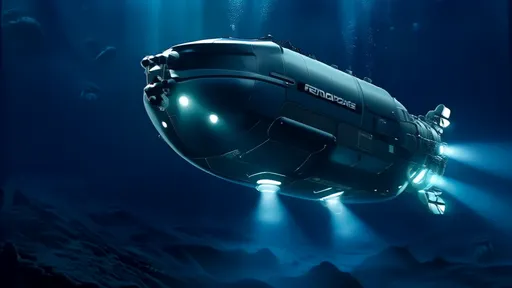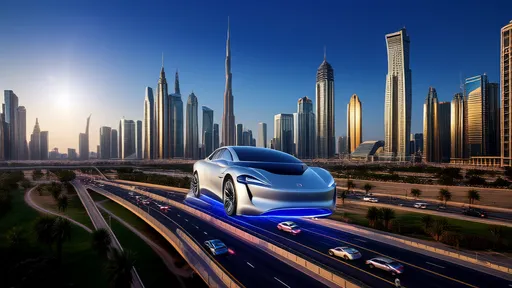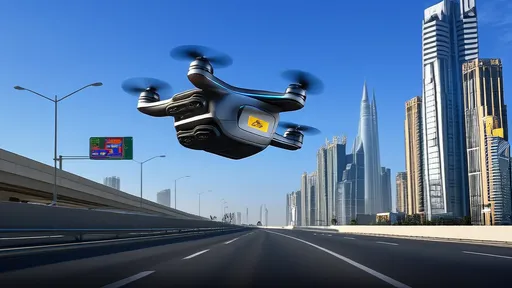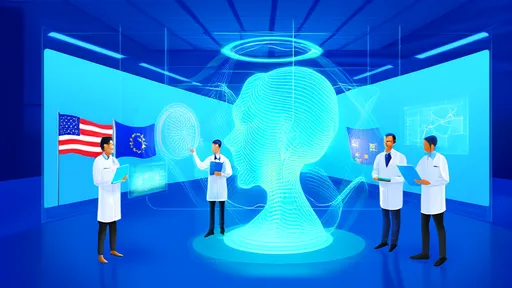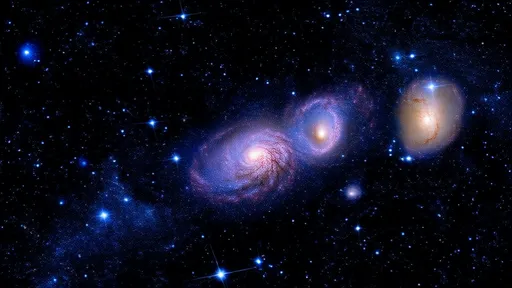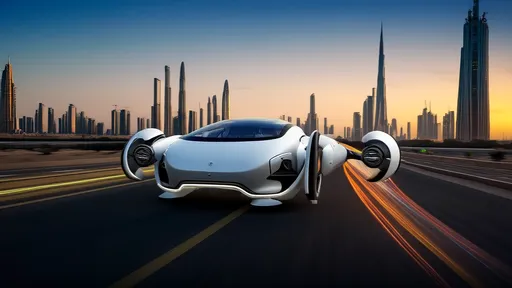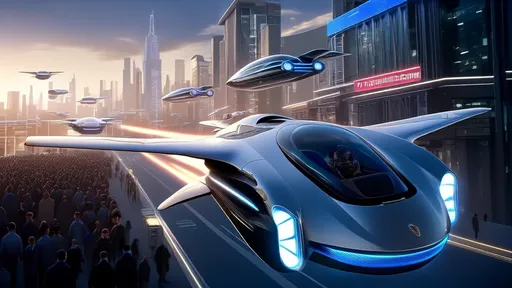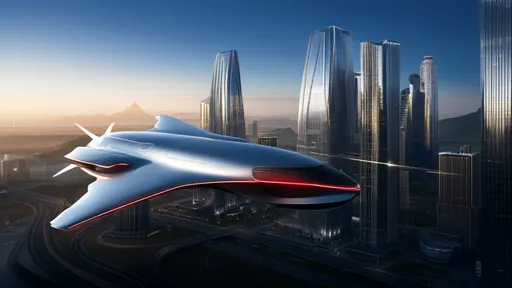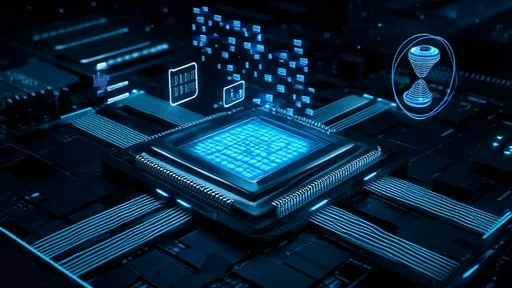The Euclid Space Telescope, humanity's newest and most ambitious eye on the cosmos, has begun its monumental mission to pierce the profound darkness that envelops our universe. Launched into the silence beyond our atmosphere, its purpose is not merely to capture stunning celestial portraits but to map the invisible architecture of reality itself. For decades, astronomers have known that the cosmos we see—the glittering tapestry of stars, galaxies, and nebulae—comprises a mere five percent of the total content of the universe. The remaining ninety-five percent is a profound mystery, a dual enigma composed of dark matter and dark energy. These are the phantoms of physics, entities that do not emit, absorb, or reflect light, yet whose gravitational influence dictates the fate of everything we hold visible. Euclid is our most sophisticated attempt to date to bring these shadows into the light, to understand the hidden forces that have shaped the universe's past and will determine its ultimate destiny.
The concept of dark matter first emerged from the keen observations of astronomers like Fritz Zwicky in the 1930s. Studying the Coma Cluster of galaxies, Zwicky calculated that the visible mass of the galaxies was vastly insufficient to provide the gravitational glue holding the cluster together. The galaxies were moving so quickly that they should have long since flown apart unless some unseen, massive substance was binding them. He called this missing mass dunkle Materie, or dark matter. Decades later, Vera Rubin's meticulous work on the rotation curves of spiral galaxies provided even more compelling evidence. Stars at the outer edges of galaxies were orbiting at speeds that defied Newtonian and Keplerian laws; according to the visible mass, they should have been drifting away into intergalactic space. Instead, they were held in a firm, invisible grip, suggesting a massive, non-luminous halo of matter enveloping each galaxy. This was not a few missing stars or some faint gas; this was a fundamental component of the cosmos, a scaffold upon which the luminous universe is built.
Dark energy, by contrast, is a far more recent and even more perplexing discovery. In the late 1990s, two independent teams of astronomers were observing distant Type Ia supernovae—cosmic standard candles—to measure the rate of the universe's expansion. The prevailing belief was that this expansion, initiated by the Big Bang, should be slowing down due to the collective gravitational pull of all matter. To their astonishment, they found the opposite. The expansion of the universe is not slowing; it is accelerating. Some repulsive force, counteracting gravity on the largest scales, is pushing galaxies apart at an ever-increasing rate. This mysterious agent was dubbed dark energy. Its nature remains one of the greatest puzzles in all of science. Is it a manifestation of Einstein's cosmological constant, a property of the vacuum of space itself? Or is it a dynamic field that changes over time, known as quintessence? The answers to these questions will redefine our understanding of physics.
This is the cosmic stage upon which the Euclid telescope enters. A mission of the European Space Agency (ESA), with significant contributions from NASA, Euclid is a technological marvel specifically designed for this detective work. Its 1.2-meter diameter telescope and two powerful, state-of-the-art instruments are its eyes into the dark. The Visible Imager (VIS) will capture incredibly sharp optical images of billions of galaxies over a third of the sky, while the Near-Infrared Spectrometer and Photometer (NISP) will measure their infrared light and precisely determine their redshifts—a measure of how much the universe has stretched since their light was emitted. Euclid's strategy is not to look for dark matter and dark energy directly, which is impossible, but to observe their overwhelming influence on the visible structures of the universe with unprecedented precision and scale.
To probe the secrets of dark matter, Euclid will employ a technique known as weak gravitational lensing. According to Einstein's theory of general relativity, mass warps the fabric of spacetime. As light from distant galaxies travels across the cosmos towards us, its path is subtly bent and distorted as it passes through the gravitational fields of massive structures, most of which is dark matter. This effect is like looking at a distant streetlamp through the heat haze rising from a hot road; the image is warped and shimmering. By meticulously measuring the minute, coherent distortions in the shapes of billions of galaxies, Euclid will be able to reconstruct a three-dimensional map of the dark matter distribution throughout the universe. This map will reveal the cosmic web in its entirety—the vast, invisible filaments of dark matter that connect galaxy clusters and form the backbone of the large-scale structure of the universe. It will show us where the dark matter is concentrated and how it has clumped together over cosmic time, providing critical clues to its fundamental properties.
For dark energy, Euclid will use two primary methods. The first involves creating the most extensive cosmic cartography ever attempted—a map of the three-dimensional positions of galaxies and galaxy clusters across ten billion years of cosmic history. By observing how the large-scale structure of the universe has evolved over time, scientists can measure the rate of the universe's expansion at different epochs. Dark energy, as the driver of accelerated expansion, leaves a distinct imprint on this growth of structure. In a universe dominated by gravity, structures should form and cluster more readily. But with dark energy's repulsive push, it acts to suppress the growth of these cosmic structures over time. By comparing the galaxy map from the early universe to the present day, Euclid will precisely measure this suppression and thus characterize the strength and nature of dark energy. The second method involves measuring Baryon Acoustic Oscillations (BAO). These are frozen relics from the early universe, imprinted in the distribution of galaxies. They act as a standard ruler; by measuring their apparent size at different distances (and thus different times), astronomers can track the expansion history of the universe with extraordinary precision, offering an independent and powerful test of dark energy models.
The sheer scale of Euclid's survey is what sets it apart from any previous mission. Over its planned six-year lifetime, it will observe billions of galaxies, peering back in time to when the universe was just a few billion years old. The volume and quality of data will be staggering, far exceeding the capabilities of ground-based telescopes which must contend with the blurring effects of Earth's atmosphere and the regular cycle of day and night. From its vantage point at the Sun-Earth Lagrange point 2, a stable gravitational spot 1.5 million kilometers from Earth, Euclid will enjoy an uninterrupted, crystal-clear view of the deep sky. The statistical power derived from observing such an immense number of cosmic objects is crucial. It allows scientists to average out random variations and isolate the subtle, coherent signals of weak lensing and BAO that are the fingerprints of the dark universe.
The potential revelations from the Euclid mission are profound and could trigger a paradigm shift in fundamental physics. For dark matter, Euclid's detailed maps could help distinguish between competing theoretical models. Is dark matter "cold," composed of slow-moving, as-yet-undiscovered particles, as most current cosmological models assume? Or could there be evidence for it being "warm," with particles moving at relativistic speeds, which would alter the way structures form on small scales? The distribution of dark matter in the faintest, smallest dwarf galaxies and in the fine details of the cosmic web could provide the answer. If Euclid finds discrepancies with the predictions of the prevailing Lambda-Cold Dark Matter (ΛCDM) model, it could point the way toward a new, more complete theory of particle physics, potentially connecting the cosmic scale to the subatomic world.
For dark energy, the stakes are arguably even higher. The primary goal is to determine whether dark energy is truly consistent with Einstein's cosmological constant—a uniform energy density permeating space that does not change over time. Euclid's precise measurement of the expansion history will test this hypothesis with unrivaled rigor. If the data reveals that the strength of dark energy has varied over the lifetime of the universe, it would rule out the simple cosmological constant and point toward a dynamic field like quintessence. Such a discovery would represent a monumental breakthrough, indicating that our understanding of gravity and quantum fields is fundamentally incomplete. It would open up a new chapter in theoretical physics, forcing a revision of the Standard Model and our conception of the vacuum of space. In essence, Euclid is not just mapping the universe; it is conducting a direct test of the laws of physics as we know them.
Beyond these two primary targets, Euclid's treasure trove of high-fidelity data will be a gift to astronomy as a whole. Its deep, wide-field surveys will be a hunting ground for rare and exotic objects, from lonely planets drifting between stars to the faintest and most distant galaxies ever observed. It will shed new light on the evolution of galaxies, the growth of supermassive black holes at their centers, and the populations of stars within them. The legacy of Euclid will likely extend far beyond its primary mission, with its vast archive serving as a foundational resource for astronomers for decades to come, much like the Hubble Deep Field images did for a previous generation.
As the first images and data streams from Euclid begin to trickle back to Earth, a sense of anticipation fills the international scientific community. We stand at the threshold of a new era of cosmology. For centuries, humanity has studied the universe by the light it emits. Now, with Euclid, we are learning to see by its shadow. The mission represents a bold step into the unknown, a systematic and grand-scale effort to answer questions that strike at the very heart of our existence: What is the universe made of? Why is it structured the way it is? What will be its final fate? The journey to illuminate the dark universe has begun, and with every new data point, Euclid is not just gathering information; it is slowly, painstakingly, writing the next chapter in the story of our cosmos.
The once-fantastical vision of humanoid robots, long confined to the pages of science fiction and the silver screen, is steadily materializing into a tangible engineering reality. This evolution is not the result of a single, monumental breakthrough but rather a profound and intricate symphony of advancements across a multitude of scientific and engineering disciplines. The quest to create machines that not only look but also move, perceive, and interact with the fluidity and adaptability of humans represents one of the most ambitious technological endeavors of our time. It is a grand convergence, where progress in artificial intelligence, materials science, mechanical engineering, and cognitive science coalesces to breathe life into metal and silicon, pushing the boundaries of biomimicry to unprecedented heights.
The recent inclusion of humanoid robots in the 2025 Top Ten Global Engineering Achievements marks a watershed moment in technological history. This recognition transcends mere academic acknowledgment; it represents a collective global validation of decades of research, development, and iterative innovation in robotics. For years, humanoid robots existed primarily in the realms of science fiction and laboratory prototypes, often viewed as fascinating but distant curiosities. Their elevation to a top global engineering feat signals a profound shift—a transition from conceptual marvels to tangible agents of change poised to reshape our societal and industrial landscapes.
In a landmark recognition of human engineering prowess, China's full-ocean-depth manned submersible has been selected among the 2025 Top Ten Global Engineering Achievements, standing shoulder-to-shoulder with revolutionary projects like quantum computing infrastructure and Mars colonization prototypes. This prestigious listing, announced by the International Engineering Consortium earlier this morning, represents more than just technological acknowledgment—it signifies humanity's renewed commitment to conquering Earth's final frontier.
In the heart of Dubai's morning rush hour, the familiar gridlock of Sheikh Zayed Road stretches for kilometers below, but above the shimmering asphalt, a new dimension of transportation is quietly rewriting the rules of urban mobility. As first reported by The Times of India, the city's ambitious flying car initiative has transitioned from futuristic concept to operational reality, with commuters now gliding between skyscrapers in electric vertical take-off and landing vehicles. This isn't a scene from a science fiction film but the new daily reality for a growing number of Dubai residents who have traded their terrestrial commutes for the freedom of three-dimensional travel.
The desert skies of the United Arab Emirates, long dominated by the sleek silhouettes of commercial airliners and private jets, are poised to welcome a new kind of vessel. In a landmark decision that signals a significant leap from science fiction to tangible reality, a specific model of flying car has been granted a special certificate of flight from the UAE's civil aviation authority. This is not merely a provisional test permit for a closed course; it is a crucial regulatory nod that brings the vision of urban air mobility one giant step closer to the daily lives of the region's residents.
In a move signaling a new era of technological collaboration, Southeast Asian nations and the United States are forging a groundbreaking partnership in artificial intelligence development. This strategic alliance emerges at a critical juncture when global AI governance remains fragmented and the technology's potential to reshape economies and societies becomes increasingly apparent. The collaboration represents more than just technical cooperation—it embodies a shared vision for responsible innovation that respects cultural diversity while addressing common challenges.
The Euclid Space Telescope, humanity's newest and most ambitious eye on the cosmos, has begun its monumental mission to pierce the profound darkness that envelops our universe. Launched into the silence beyond our atmosphere, its purpose is not merely to capture stunning celestial portraits but to map the invisible architecture of reality itself. For decades, astronomers have known that the cosmos we see—the glittering tapestry of stars, galaxies, and nebulae—comprises a mere five percent of the total content of the universe. The remaining ninety-five percent is a profound mystery, a dual enigma composed of dark matter and dark energy. These are the phantoms of physics, entities that do not emit, absorb, or reflect light, yet whose gravitational influence dictates the fate of everything we hold visible. Euclid is our most sophisticated attempt to date to bring these shadows into the light, to understand the hidden forces that have shaped the universe's past and will determine its ultimate destiny.
Beijing's National Stadium, once the iconic centerpiece of the 2008 Summer Olympics, echoed with a different kind of applause this week. The thunderous cheers were not for human athletes pushing the limits of physical endurance, but for their mechanical counterparts—humanoid robots competing in the inaugural World Humanoid Robot Sports Games. The air, thick with the whirring of servos and the collective anticipation of engineers and spectators, marked a pivotal moment in the history of robotics and international sport.
The landscape of oncology treatment is undergoing a profound transformation, driven by the emergence of third-generation antibody-drug conjugates (ADCs). These sophisticated therapeutic agents represent a significant leap forward in the quest for precision medicine, offering new hope for patients battling various forms of cancer. Unlike conventional chemotherapy that attacks both healthy and cancerous cells indiscriminately, these advanced biologics deliver potent cytotoxic agents directly to tumor cells, minimizing damage to healthy tissues and reducing debilitating side effects.
In the relentless battle against cancer, a revolutionary class of therapeutics has emerged, earning the evocative moniker of "precision missiles" for their ability to deliver potent cytotoxic agents directly to malignant cells while sparing healthy tissue. These are Antibody-Drug Conjugates, or ADCs, and they represent a sophisticated fusion of biologic targeting and potent chemotherapy, a paradigm shift in oncology that is redefining treatment expectations for a growing number of cancers.
The desert skies above Dubai witnessed a historic moment last week as the sleek silhouette of a flying car cut through the cerulean blue, marking what many industry experts are calling the dawn of a new era in personal transportation. The demonstration, orchestrated by the pioneering aviation firm AeroMobil Emirates, was not merely a test flight; it was a powerful statement of intent, a tangible promise of a future once confined to the pages of science fiction.
In a remarkable demonstration of growing consumer confidence in aerial mobility solutions, global pre-orders for flying cars have surged past the 7,000-unit milestone. This significant threshold, reached far earlier than most industry analysts had projected, signals a fundamental shift in public perception about the viability of personal air transportation. What was once confined to science fiction novels and futuristic concept videos is rapidly transforming into a tangible consumer product category with demonstrated market demand.
In the shimmering heat of the Arabian Gulf, a new silhouette is beginning to pierce the horizon. It is not the familiar form of a commercial airliner nor the sleek profile of a private jet, but something altogether more futuristic—a flying car. This vision, once confined to the realms of science fiction, is fast becoming a tangible reality, and it is Chinese innovation that is poised to turn the skies above Dubai, Abu Dhabi, and Riyadh into a dazzling new theater of urban mobility.
The relentless march of artificial intelligence demands computational power on a scale previously unimaginable. At the heart of this revolution lies the Graphics Processing Unit, or GPU, which has evolved from a specialized graphics rendering component into the primary engine for AI workloads. The latest generation of GPU architectures represents a paradigm shift, not merely an incremental improvement. These new designs are fundamentally re-engineering the silicon to tackle the unique and colossal demands of modern AI, with a core focus on achieving unprecedented levels of computational density and efficiency through hyper-scale integration.
The ASEAN-US AI Cooperation Forum concluded its third annual session this week with a renewed commitment to bridging the digital divide through focused capacity building and infrastructure development. Held against the backdrop of rapid technological advancement, the forum brought together policymakers, industry leaders, and academics to chart a collaborative path forward, recognizing that the benefits of artificial intelligence must be distributed equitably to ensure regional stability and prosperity.
